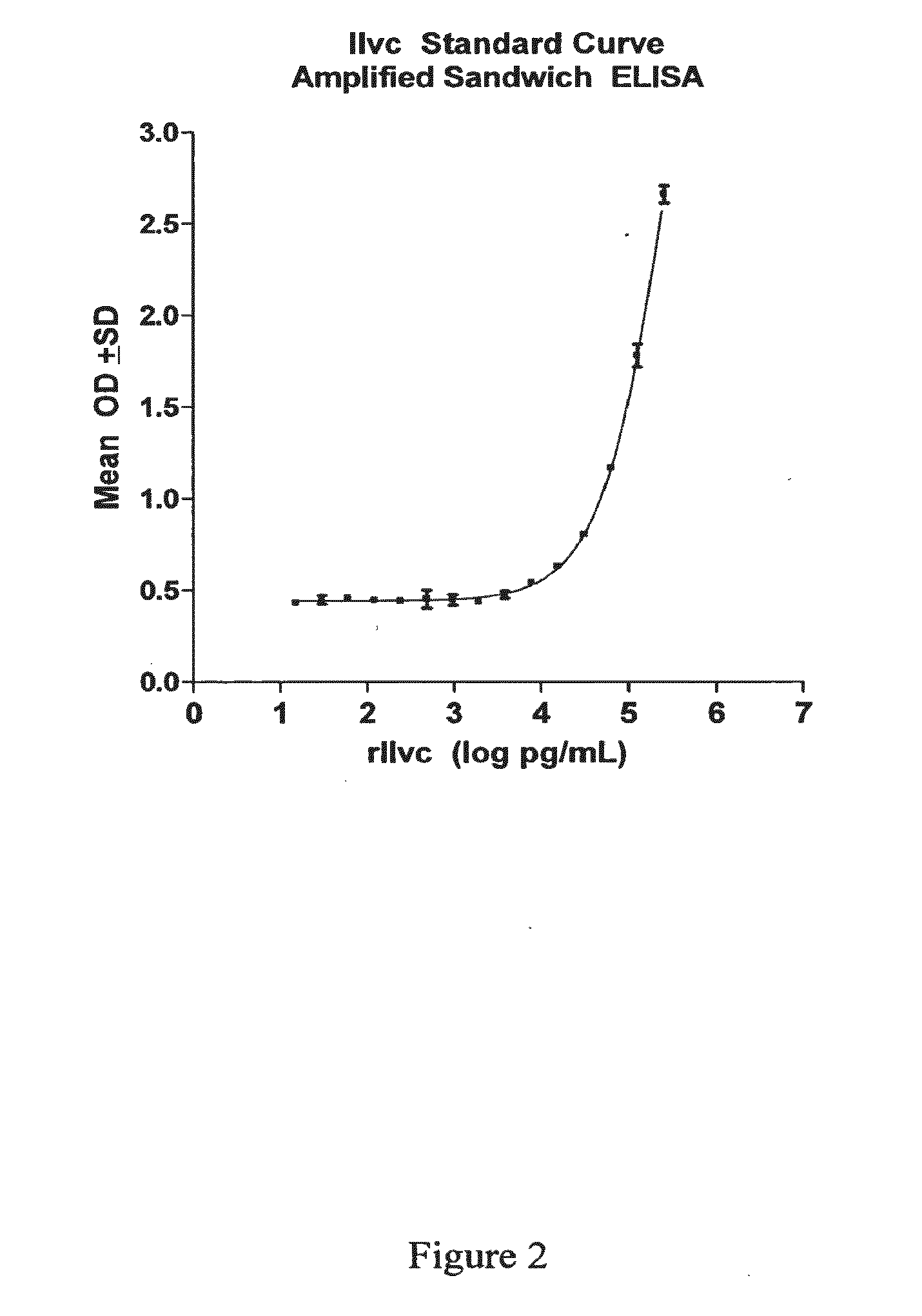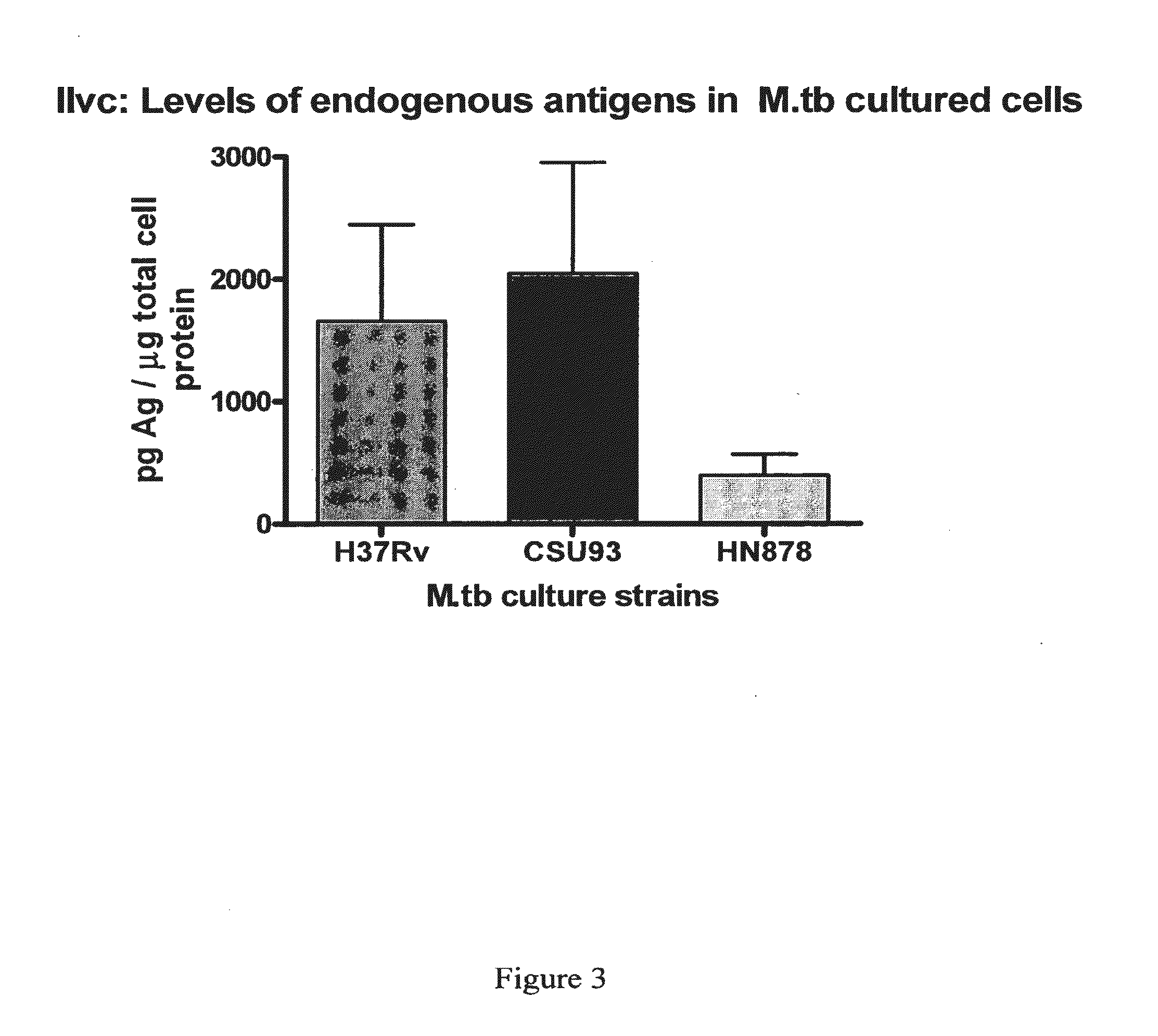Method of Diagnosis of Infection by Mycobacteria and Reagents Therefor
a technology of mycobacteria and reagents, applied in the direction of antibacterial agents, peptide/protein ingredients, drug compositions, etc., can solve the problems of poor compliance, serious complications and death, and worsening problems, and achieve cost-effective and improved diagnostic accuracy.
- Summary
- Abstract
- Description
- Claims
- Application Information
AI Technical Summary
Benefits of technology
Problems solved by technology
Method used
Image
Examples
example 1
Sample Collection, Processing, Nucleic Acid Extraction, Synthesis, and Quantatitation, Antibody Production and Immunoassays
[0416]Subject to the disclosure in the subsequent examples i.e., Example 2 et seq., the following general methods were employed for sample collection and nucleic acid extraction, processing, synthesis, and quantatitation. A method referred to in this example has been utilized unless an alternate method is specifically recited in a subsequent example i.e., Example 2 et seq. Methods referred to in the subsequent examples are to be construed with reference to that specific example.
1. Collection of Patient Sputum Samples
[0417]TB-negative and TB-positive sputa were used to evaluate nucleic acid based assays using primer pairs, with optional antigen based assay and with optional antibody based assay for a TB diagnostic as described in the subsequent examples. Eighty (80) patient sputa samples were recruited from Cameroon in 2007. Samples were treated with protease inh...
example 2
Detection of Active TB Complex in Clinical Sputa Using Quantitative PCR
[0467]In the first set of experiments the inventors sought to develop a quantitative real-time PCR assay for the detection of ilvC biomarker (SEQ ID NO:2) encoding Mycobacterium tuberculosis complex KARI protein (SEQ ID NO:1), as a means of detection of tuberculosis or an infection by one or more organisms of the Mycobacterium tuberculosis complex. The inventors also sought to correlate the results obtained with severity of infection as demonstrated by smear status grading and to compare the sensitivity of the assay for the detection of ilvC biomarker with detection of other biomarkers of one or more organisms of the Mycobacterium tuberculosis complex. Other biomarkers assayed included nucleic acids (SEQ ID NOs: 4, 6, 8 and 28) encoding, Mycobacterium tuberculosis BSX protein (SEQ ID NO:3), Mycobacterium tuberculosis Rv1265 protein (SEQ ID NO:5) and Mycobacterium tuberculosis S9 protein (SEQ ID NO:7). The 16S rRN...
example 3
Antigen-Based Diagnosis of Tuberculosis or Infection by M. tuberculosis Using Antibodies that Bind to M. tuberculosis Ketol-Acid Reductoisomerase (KARI)
1. Identification of KARI Protein in TB-Positive Subjects
[0481]A protein having a molecular weight of about 36 kDa was recognized in TB+ samples. The sequences of ten peptides from MALDI-TOF data matched a sequence encoded by the ilvC gene of M. tuberculosis set forth in SEQ ID NO: 1. The percent coverage of SEQ ID NO: 1 by these 10 peptides was about 37%, suggesting that the peptide fragments were derived from this same protein marker.
[0482]The identified protein having the amino acid sequence set forth in SEQ ID NO: 1 is a putative Ketol-Acid Reducto Isomerase and was designated as “KARI”.
2. Antibodies
[0483]Antibodies were prepared against recombinant KARI protein encoded by the ilvC gene of M. tuberculosis (SEQ ID NO:2) using procedures described herein. Ten (10) antibodies were produced and screened for their suitability as descr...
PUM
| Property | Measurement | Unit |
|---|---|---|
| Tm | aaaaa | aaaaa |
| Tm | aaaaa | aaaaa |
| Tm | aaaaa | aaaaa |
Abstract
Description
Claims
Application Information
 Login to View More
Login to View More - R&D
- Intellectual Property
- Life Sciences
- Materials
- Tech Scout
- Unparalleled Data Quality
- Higher Quality Content
- 60% Fewer Hallucinations
Browse by: Latest US Patents, China's latest patents, Technical Efficacy Thesaurus, Application Domain, Technology Topic, Popular Technical Reports.
© 2025 PatSnap. All rights reserved.Legal|Privacy policy|Modern Slavery Act Transparency Statement|Sitemap|About US| Contact US: help@patsnap.com



